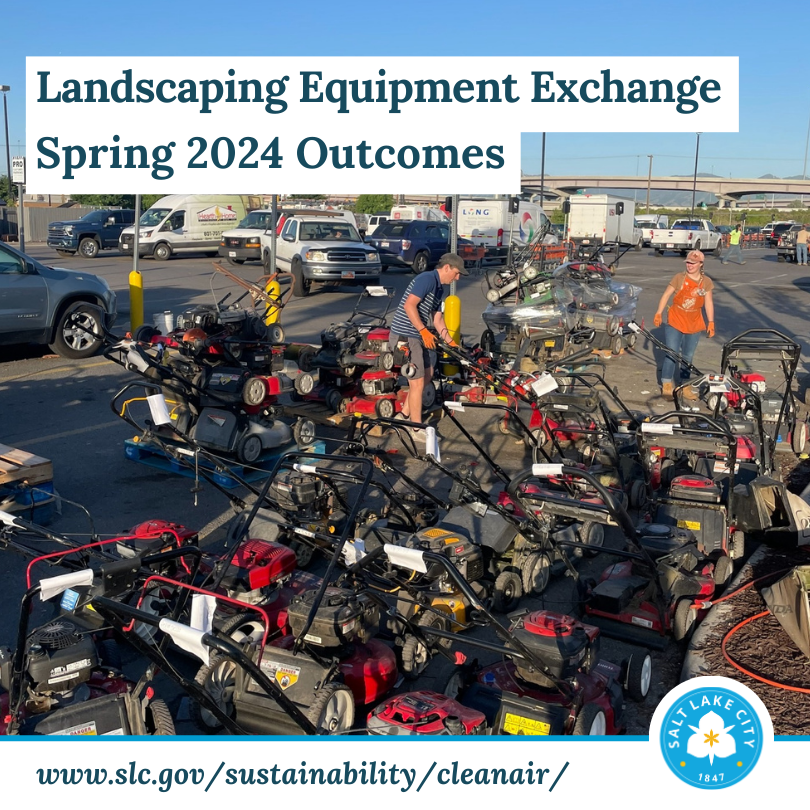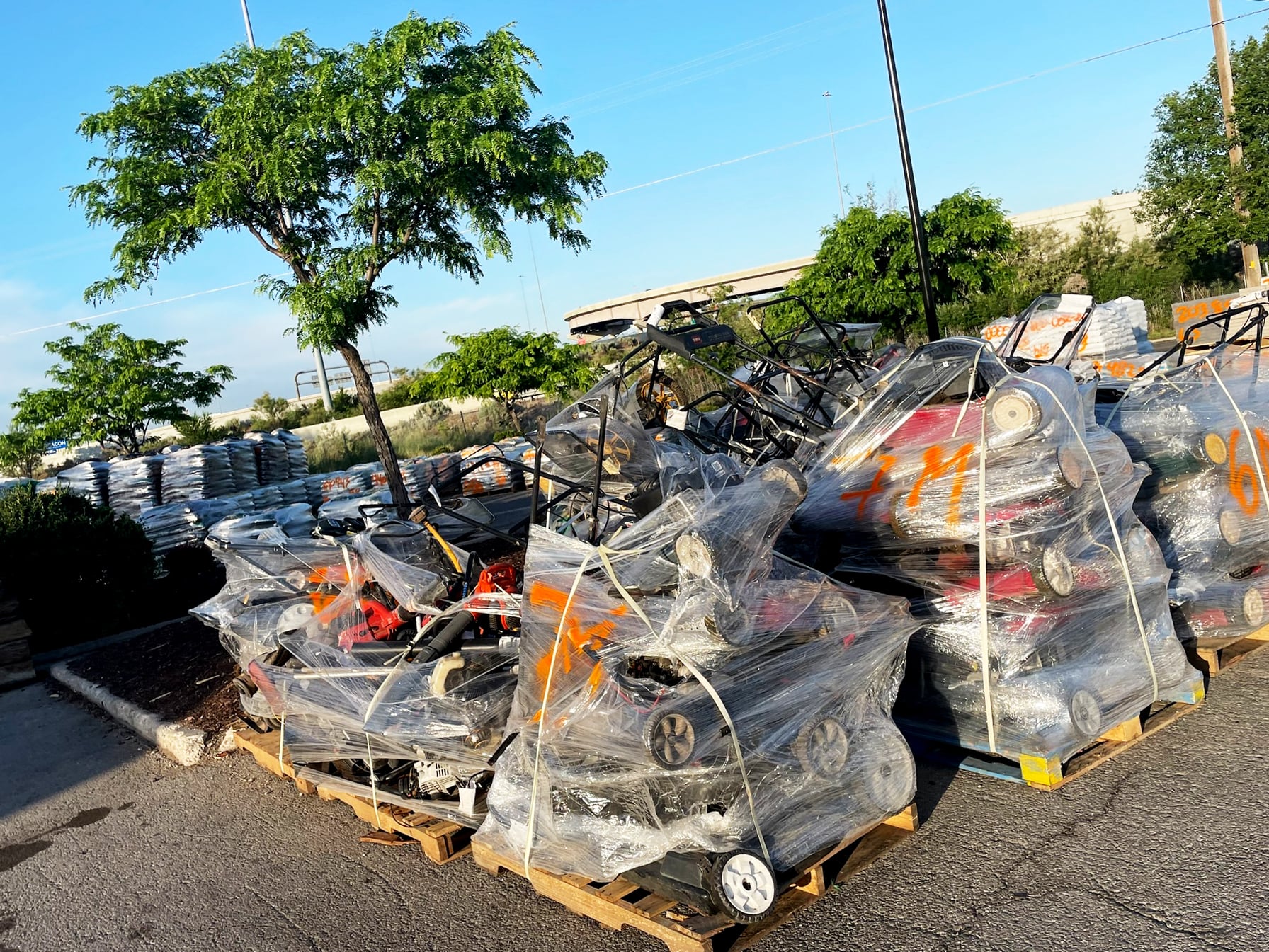
Here at SLCgreen, we’re always working to find actionable, high-impact strategies to improve local air quality. This spring, we ran our first-ever Landscaping Equipment Exchange (in the past we’ve partnered with the State’s program). Our goal is to remove highly polluting gas-powered landscaping tools from the airshed and replace them with electric alternatives. Through this spring’s program, the City was able to:
♻ Recycle 707 pieces of gas-powered equipment.
⚡ Support the purchase of 1,324 electric landscaping tools.
🌏 Reduce annual air pollution by 5,869 pounds.
The Landscaping Equipment Exchange Program is part of Clean Air SLC – a new suite of air quality programs offered by the City to benefit Salt Lakers. It includes the landscaping exchange, the e-bike incentive program, and a forthcoming indoor air quality program – all meant to clear the air in our communities and homes.
Salt Lake City faces significant air quality challenges year-round. From ozone and wildfire smoke in the summer to particulate matter pollution in the winter, we are consistently breathing in harmful pollution. And gas-powered lawn equipment creates a lot of air pollution! That’s why Salt Lake City offered incentives for residents to switch to battery-powered lawn mowers, leaf blowers and string trimmers – especially impactful for equipment that typically runs on highly-polluting two-stroke engines.

A question we’ve heard around this program is why electric equipment is considered a better option for the environment.
To answer that question, it’s helpful to understand some of the science around 2-stroke and 4-stroke engines. Here’s a science-y primer from Salt Lake City’s very own Dr. Atim Enyenihi. In short: 2-stroke engines produce more exhaust and more contamination than more sophisticated engines. 4-stroke engines are better, but they still emit direct pollution.
And this air pollution is particularly toxic for those using the equipment. Electric motors do not run off combustion, so there is no yucky smoke or pollution coming into your yard or home. So, it’s a public and environmental health benefit to encourage as many swaps from gas to electric as possible. Win-win! Electric equipment is also cleaner and quieter, which is a benefit to neighborhoods and to those using the equipment (like your kids, your neighbors, and landscapers).
Don’t you have to charge these batteries from our electric grid? Yes, but electric motors in general are also inherently more efficient than alternatives that use combustion. This is the case for cars as well as smaller pieces of equipment. So, you are still overall saving carbon pollution by charging your battery with electric juice from the grid rather than gasoline from the gas station.
What about battery recycling you ask? As with all lithium-based batteries, electric equipment should be properly recycled at its end-of-life as electronic waste. You can recycle these pieces of equipment through Salt Lake City’s Call 2 Haul program, or by taking them to the Landfill’s Household Hazardous Waste drop-off facility. The good news is that battery technology is constantly improving and lasts a long time.
Everything we can do to reduce air pollution is a clear public health benefit. We are looking forward to running a second round of equipment exchange this fall! Learn more and stay tuned by signing up for email updates here.
